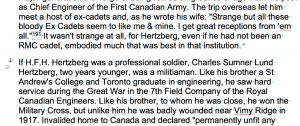Weird Issues
On this page you will find fixes for odd file issues. They come up rarely, but when they do they can be a pain to fix. If you have any weirdness you would like to add to this page, please do! If you are not comfortable posting on the wiki, then send the directions to the Production Coordinator and they will put them up.
Images as Objects and Switching Page Orientation
This issue comes up very rarely, and seems to mainly be from PDF conversions from small publishers.
The pages are in Landscape Orientation, and have no margins. The image are also not saved in the document as pictures, but as objects. Basically, this makes for a tricky fix.
This video shows you how to fix it in an order that will not drive you nuts.
Below are the written directions:
- Clear Formatting for entire book
- Resize Images so they are small (see video)
- Change all images so they are In Line with Text
- Select the first page that is Landscape:
- Go to the Layout tab in the Ribbon Menu
- Select Orientation
- Change to Portrait
- You will note the size is now off. To fix this:
- Select the first page of the book to check the size (we want to have the same size for the entire book)
- Go to Layout tab in Ribbon Menu
- Open the Size Menu
- Scroll down until you see which size is selected for that page (in this case it is US Letter)
- Fix the margins:
- Select the first page
- Go to the Layout Table in the Ribbon Menu
- Select Margins and choose Normal
- Repeat for each page
- Resize image to fit page (see video)
- Move text below image
- Format the rest of the book!
Hidden Text Boxes
Sometimes, after conversion, a book may have miniscule text-boxes. They can be hard to notice, and might be caught in only a few ways, such as:
- if you were to happen to select a whole paragraph, causing the text box to be selected, and therefore stand out due to the resizing handles on the frame, or
- if you notice that a paragraph appears to be slightly pixelated when compared to the one coming before or after it, select that paragraph; you may catch a rogue text box!
If you notice that you have paragraphs that lack clarity, but do not appear to be hiding a text box, try this test:
- Insert a text box, anywhere in the document (keep track of the page number so you can return to it).
- Then, select your text box, so that the box is selected and the cursor is not flashing.
- Next, hit the Tab key. This will take you to the next text box in your document, if there is one. In this case, the paragraph that contains it will likely have an object anchor at its start. You might be able to see the text box, which is now selected, and you may not.
- Either way, you are safe to hit the delete key; this will remove the text box (watch to make sure nothing else is deleted).
- Return to the page where you drew a text box, select it again, and hit tab. You will either be taken to another text box, or nothing will happen, indicating that there are no hidden text boxes in your document.
- Continue until no more text boxes can be found.
- When you are done, be sure to delete the text box that you drew!
 Figure 1: If you look closely, you might be able to tell that the text of the second paragraph is slightly pixelated around the edges of the letters. This is a sign that there is something hidden in this paragraph.
This is how the text box (to the left of the second paragraph, beneath the object anchor) appears after the "Select text-box" + Tab" move; notice the object anchor and, just below it, the selected text box – or, at least some of the box's handles!
Figure 1: If you look closely, you might be able to tell that the text of the second paragraph is slightly pixelated around the edges of the letters. This is a sign that there is something hidden in this paragraph.
This is how the text box (to the left of the second paragraph, beneath the object anchor) appears after the "Select text-box" + Tab" move; notice the object anchor and, just below it, the selected text box – or, at least some of the box's handles!
Q&A Archive
Q: If there are phrases used within the text that indicate the motion of turning a page, for example, should we edit them to reflect the digital format? For example, in Rich Man, Poor Man after the book ends, it states "Turn the page to start reading the follow-up to Rich Man, Poor Man" - I was considering changing this to something along the lines of: "Continue reading for the follow-up to Rich Man, Poor Man" - is this the correct thing to do? - Jenn
A: Interesting situation! I would suggest we remove this page entirely from our version of the book.
